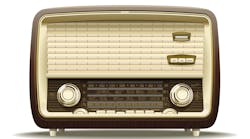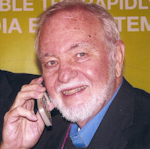Can you believe AM radio is still around? Me and a few others still do use it. I listen mostly in the car for traffic, weather, and news, though sometimes I listen to talk programs on a small AM/FM kitchen radio. Seems so retro, but it is still useful.
Nevertheless, AM radio has been in decline for years, with many AM stations going out of business each year. Now there are only 4,684 left as of the end of 2015. That stands in contrast to the 6,701 commercial FM stations that are thriving, a number that does not include an additional 4,095 educational FM stations and 1,433 low power stations. All this is still analog, remember. So some big questions come to mind: Why is AM dying, and what can be done to save it?
AM is dying for a lack of listeners. Only 10 to 20 % of all radio listeners listen to it, and that depends upon the locale. It may be less that 10 % in some places. If stations can’t get listeners, they cannot get the advertising that keeps them alive. Most of the listeners moved on to FM or other radio sources. These other sources include satellite and Internet radio, along with things like iPods or smartphones loaded with songs and podcasts. Satellite radio is now in most vehicles.
Then there is digital radio, although this is not a popular option. The U.S. version (called HD Radio) is available on both the AM and FM bands, but few receive it. The digital version simulcasts the analog content in an OFDM overlay on the same frequency. You need a special radio to get it, an expense justified by its proclaimed benefits of less noise and greater fidelity. I’ve tried it, but it seems about the same to me. Some cars have HD Radio, but otherwise you need a unique receiver. There are not too many sources. Canada launched Digital Audio Broadcast (DAB) in the L microwave band a few years back, but it has not been successful, either. FM still thrives there.
In addition to the many multiple competitive sources of content, AM is also failing because of technical problems inherent in the AM process, along with some unyielding regulations. For example, AM stations lose listeners at night because the FCC makes them cut power or shut down completely to avoid interference to other stations on the same frequency. AM signal propagation in the 535 to 1,705 kHz range changes drastically from day to night.
During the day propagation is primarily by ground wave with a range of no more than 200 miles, so stations can transmit full power. At night there is less upper layer ionization, so the AM signal refracts off the upper layers, causing the signal to skip hundreds or even thousands of miles. This causes interference to other stations. Some stations use complex and expensive directional antenna systems to solve the problem.
Another issue is noise. The AM band is very noisy, with interference from power lines, auto ignition, fluorescent lights, motors, CLFs, and any electronic equipment with switch-mode power supplies, which includes almost every product today. Weak signals are swamped by noise, and even strong signals suffer from it. Noise makes listening annoying at best, and off-putting to the max.
Realizing these problems, back in October of 2013, the FCC issued a Notice of Proposed Rule Making (NPRM) designated 13-249 Revitalization of the AM Radio Service. The FCC solicited input from all sources on how to solve AM’s problems. Just recently, it announced the first of several solutions. The new rules allow some AM stations to use FM translators. A translator rebroadcasts a station’s content on an available FM frequency. In this way, stations can continue to transmit at night, thereby retaining a greater audience.
Other solutions are on the way, including something called Modulation Dependent Carrier Level (MDCL) control. MDCL allows stations to decrease carrier level and adjust sideband power to save power and improve efficiency. Also on the way are other changes that lessen the stringent antenna requirements. It will be interesting to see what else the FCC comes up with.
AM is worth saving; it is a valuable local community resource. AM radio serves a public safety purpose for emergency conditions. It provides valuable services to ethnic and religious populations, as well as high school sports coverage. And still does a great job of news, weather, and traffic coverage. Talk shows are also popular. In short, analog still lives.
What do you recommend to save AM? Or should we just let it go? With spectrum in short supply couldn’t we just repurpose this band? And if so, to what?

